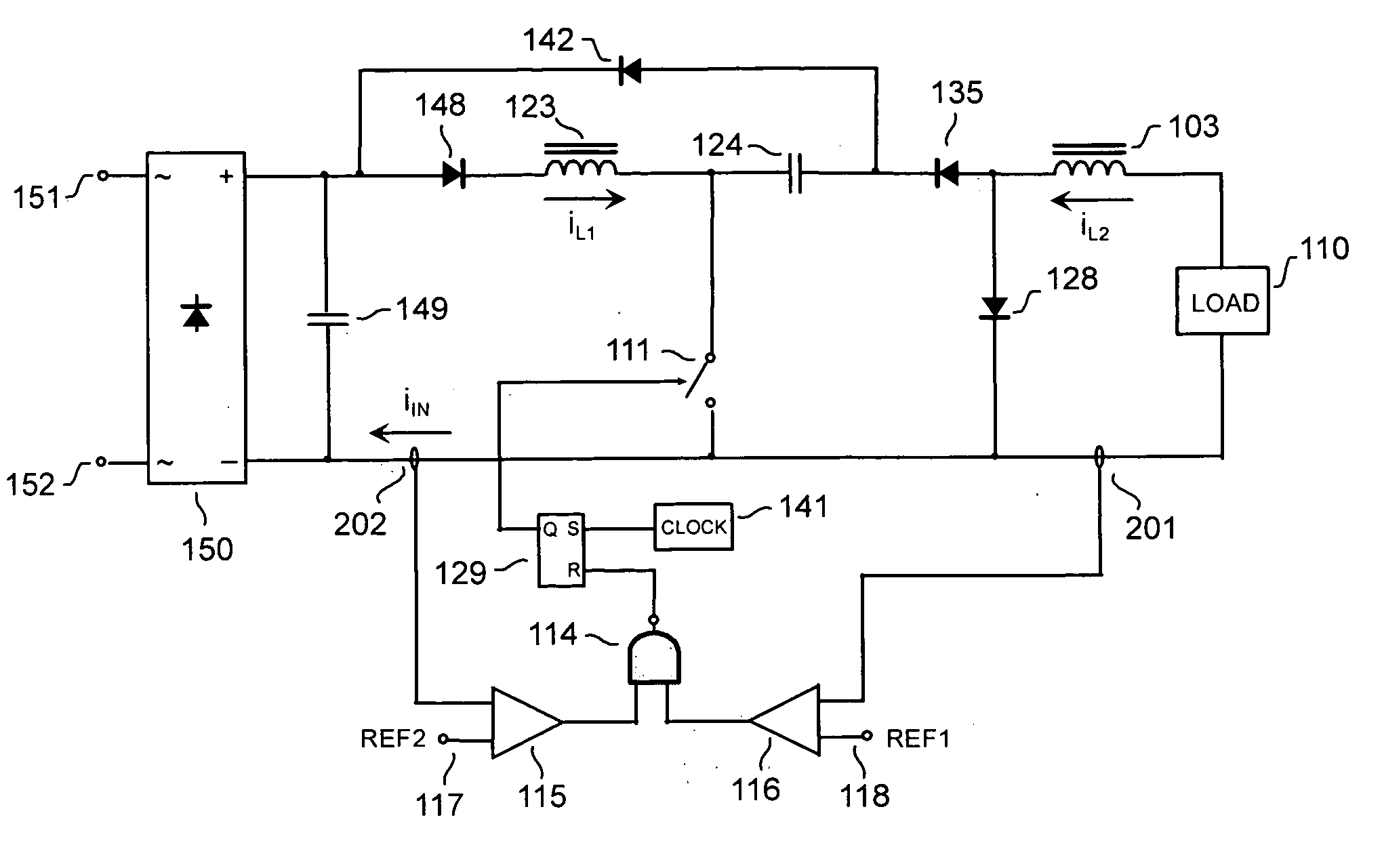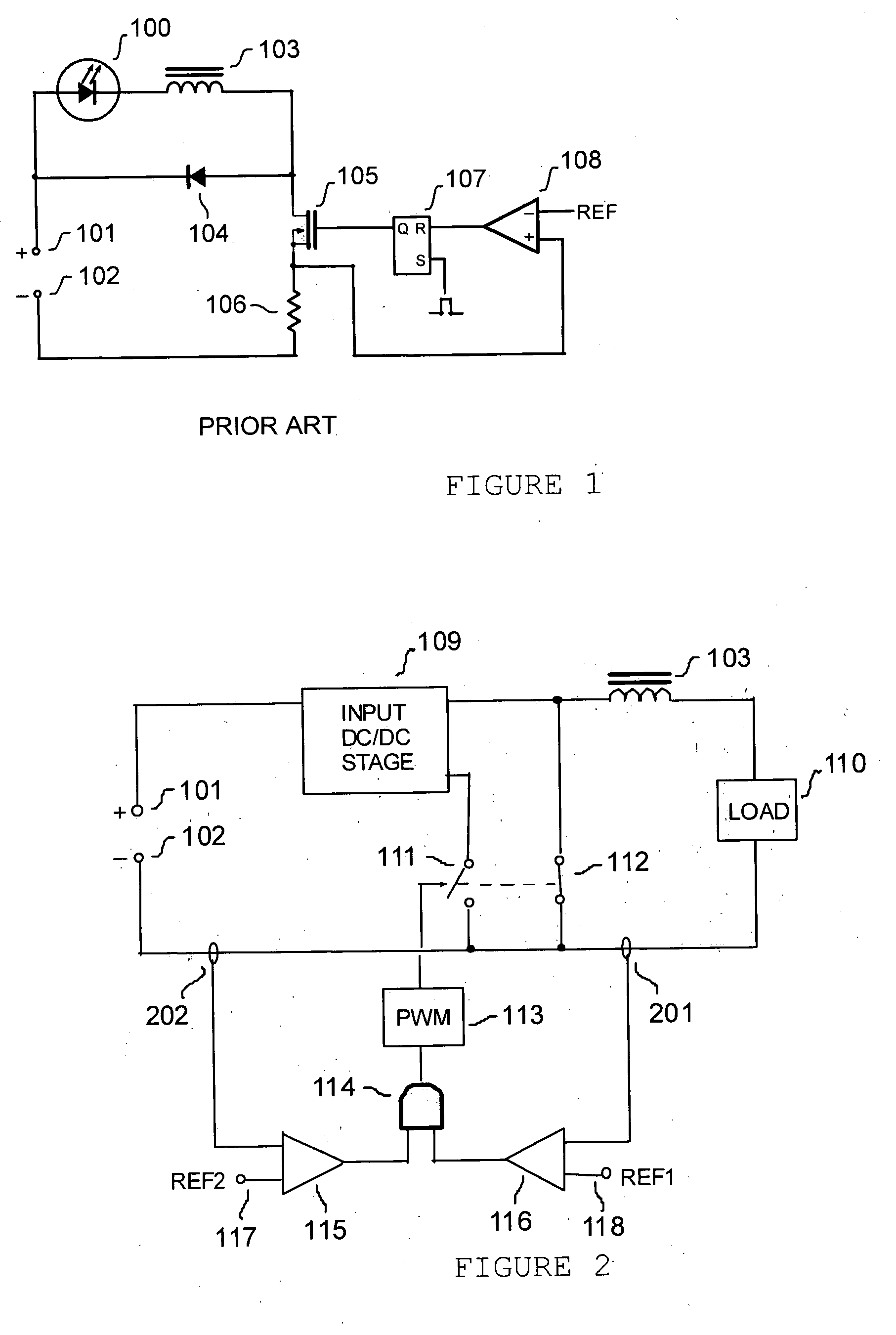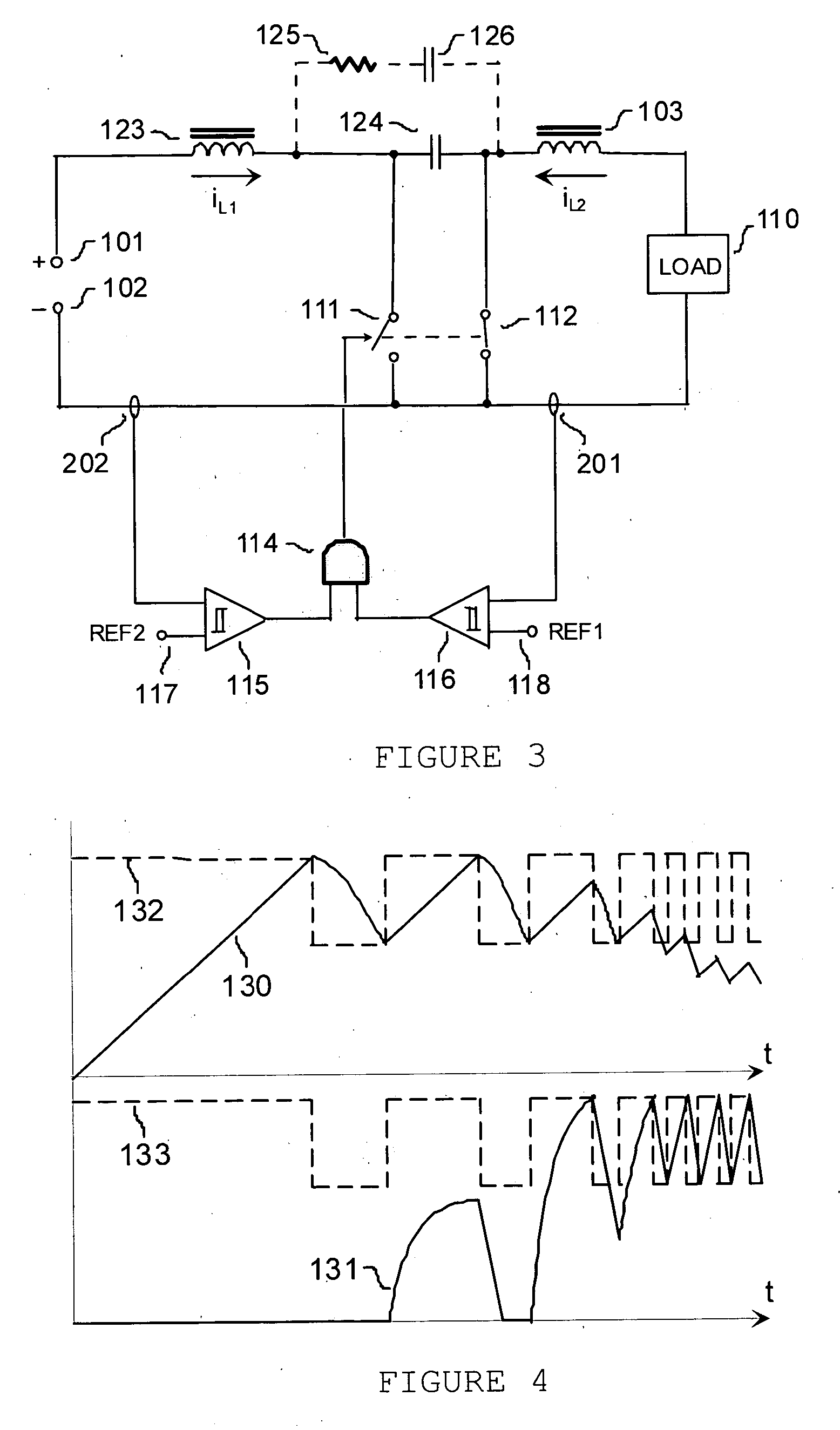Method and apparatus for controlling output current of a cascaded DC/DC converter
a technology of dc/dc converter and output current, applied in the direction of electric variable regulation, process and machine control, instruments, etc., can solve problems such as transient performance problems and start-up of topologies
- Summary
- Abstract
- Description
- Claims
- Application Information
AI Technical Summary
Problems solved by technology
Method used
Image
Examples
Embodiment Construction
[0019] A buck converter is a basic single-inductor DC / DC converter topology characterized by a step-down voltage transfer ratio. The buck converter is useful for driving light emitting diodes due to its continuous output current. Controlling a buck LED driver can be reduced to merely open-loop control of peak current in the inductor. Easy implementation of PWM dimming is another attractive feature of an open-loop controlled buck converter. Simply switching its control circuit on and off at a few hundred Hertz provides PWM dimming of the LED lamp without subjecting it to any current overshoots, and achieves a wide dynamic range of PWM dimming.
[0020] However, buck converters have several disadvantages. The disadvantages of the buck converter include: step-down only DC transfer ratio, high input current ripple, poor control over output current when operating with a large step-down ratio, poor input power factor when utilized as an AC / DC converter for offline LED driving.
[0021] Cascad...
PUM
 Login to View More
Login to View More Abstract
Description
Claims
Application Information
 Login to View More
Login to View More - R&D
- Intellectual Property
- Life Sciences
- Materials
- Tech Scout
- Unparalleled Data Quality
- Higher Quality Content
- 60% Fewer Hallucinations
Browse by: Latest US Patents, China's latest patents, Technical Efficacy Thesaurus, Application Domain, Technology Topic, Popular Technical Reports.
© 2025 PatSnap. All rights reserved.Legal|Privacy policy|Modern Slavery Act Transparency Statement|Sitemap|About US| Contact US: help@patsnap.com



